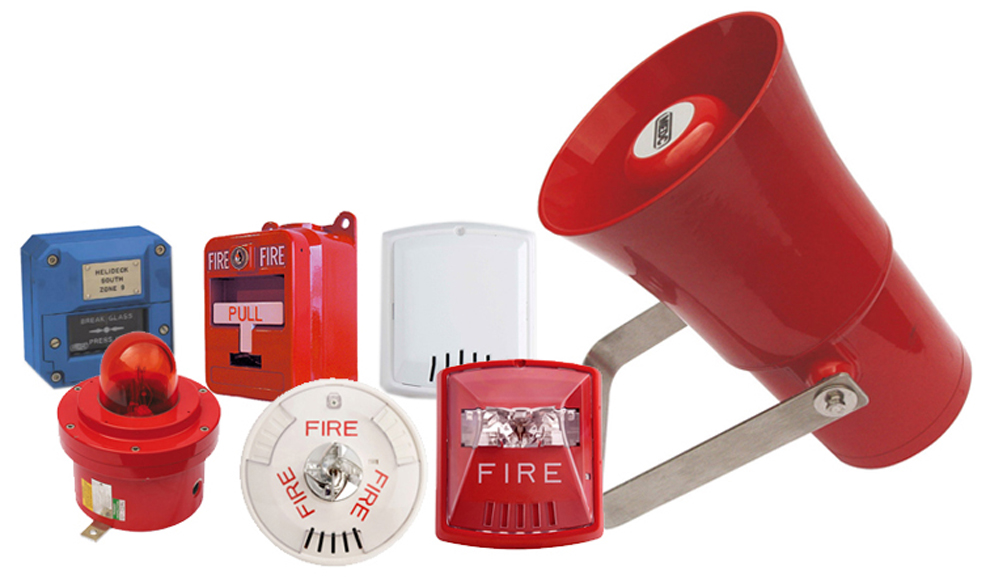Firefighting equipment
Fire-fighting equipment is a set of systems and components for detection of a fire source, timely warning and urgent elimination of fire. In addition to the equipment supply our company offers the design of complex systems for fire safety. Long-term partnerships with leading manufacturers of alarm and fire control equipment allows us to offer our customers the most cost-effective and innovative solutions. The products supplied have all the necessary approvals for use and compliance with local government standards.
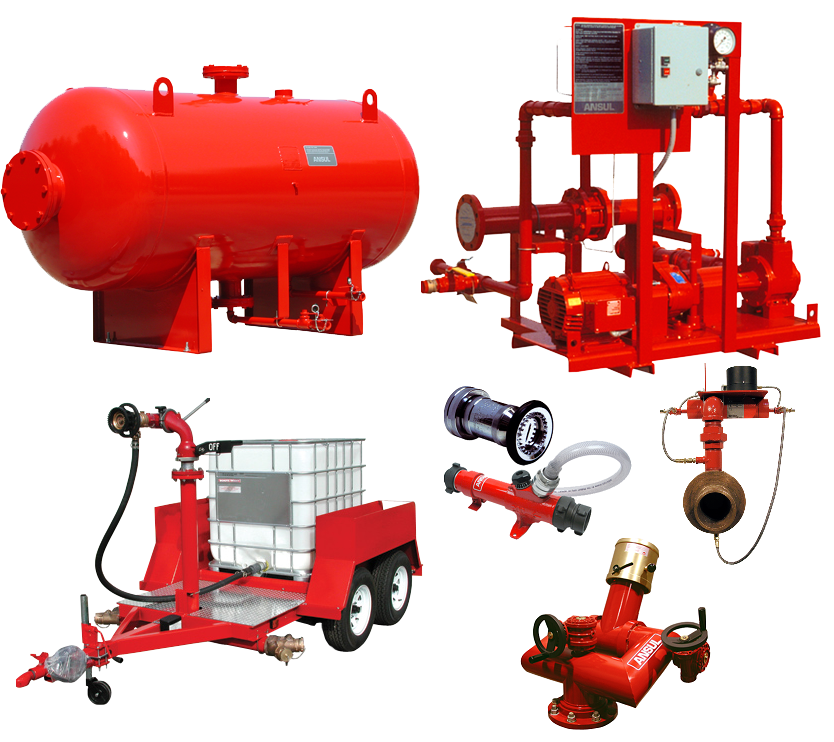
Fire suppression foam is comprised of three parts: foam concentrate, water, and air. When mixed correctly, these parts form a homogeneous foam blanket that extinguishes flames by the combined mechanisms of cooling, separating the flame source from the product surface, suppressing vapors, and smothering. This makes foam suppression systems an effective option for protecting flammable and combustible liquids.
Foam Hardware
System Tanks
System Tanks house the foam concentrate. We offer a wide variety of System Tanks ranging from vertical to horizontal, pre-piped, atmospheric, and stainless steel, as well as the accessories you’ll need to go with them. In addition, Foam pump skids are available as well.
Proportioning Devices
Proportioning Devices releases the proper amount of concentrate into the water supply based on the soltuion required. These deivces are sized differently based on a range of flow rates and pressures, while minimizing pressure loss. For help in selecting the proper proportioning device, contact Janus Fire Systems.
Discharge Devices
We have a wide array of foam discharge devices. Whether you need air aspirating, non-aspirating or water sprinkler nozzles compatable with Solberg foams, we have it all! We provide monitors, foam makers, hand line nozzles and everything in between. For help in selecting the proper discharge devices, contact Janus Fire Systems.
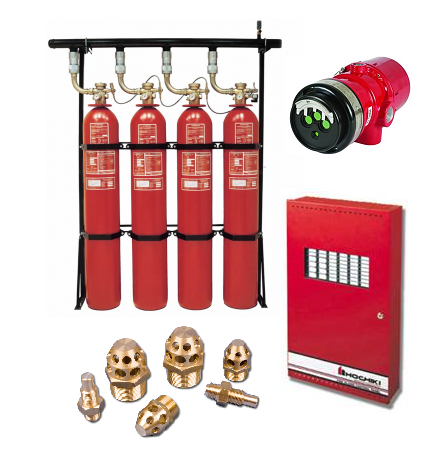
Since the elimination of Halon as a gaseous fire suppression agent, a number of replacements have been developed and are now proven alternatives in combating fire in special hazards and sensitive areas. These clean agents are identified as such because of their chemical compatibility with the atmosphere and environment. Gaseous agents today contain the same chemical firefighting method and characteristics offered by Halon but do so with molecules much less offensive to the environment.
Clean agents are used in total flooding applications to protect enclosures that are often occupied by people, contain sensitive electronic equipment or high value commodities that may be sensitive to the application of water by traditional sprinkler systems. The low toxicity of gaseous systems allow for discharge of the agents while people are still present within the protected area. The non-conductive and non-corrosive characteristics of gaseous agents make their application in areas containing sensitive electronic equipment ideal.
Clean Agents leave by no unpleasant residue or visible particulates. These agents are designed to interfere with the chemical combustion process of fire. The advantage with working on a molecular level is faster fire suppression, often within seconds, instead of minutes. Gaseous fire systems are designed with the intent of fire extinguishment as opposed to fire control normally provided by a traditional fire sprinkler system. The extinguishing process and characteristics give gaseous extinguishing systems real advantages over sprinkler systems in cases where water application may cause more damage than the fire itself.
Gaseous systems include a fixed amount of agent stored under pressure in containers that is discharged through a limited network of piping to nozzles located within the protected area. Total discharge and extinguishment is completed within seconds. Maintaining agent concentration levels for 10 minutes is important in preventing the recurrence of fire.
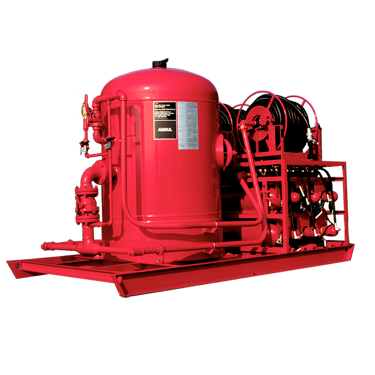
Dry chemical are commonly used in paint spray booths, dip tanks, and mixing rooms. The advantage of dry chemical fire suppression systems is the fact they are very economical. Most are “Pre-engineered” due to the standard size of paint booths and mixing rooms. Dry chemical systems can be actuated either electrically or mechanically (fusible links) which makes it a good choice for harsh environments. Systems are typically supplied with either BC or ABC (Multipurpose) agent. The big drawback to dry chemical systems is the mess created from a discharge.
Automatic, 24-Hour Protection for Industrial Applications
Could you afford to have your production line shut down due to a fire? Is there room in your operating budget to replace machinery and facilities damaged by fire? If your company is typical of today’s high-productivity, cost-conscious facilities, the answer is ‘no, we can’t have our operation interrupted by any type of fire.’ That’s why a Dry Chemical System may be your best choice for protection of any industrial process or machinery where flammable liquids or hazardous materials are involved.
Versatile Fire Suppression
Dry Chemical Systems use either Class ABC or Class BC dry chemical to suppress fire. Pound for pound, dry chemical suppresses more fire than any other agent, providing both rapid suppression and protection against fire re-ignition. The sodium bicarbonate-based dry chemical is more effective than water on Class B (flammable liquid) and Class C (electrical) fires. ABC dry chemical also suppresses Class A (wood, paper, cloth) fires. Both are environmentally safe, non-toxic and economical to use in both initial installations and recharge situations. No wonder dry chemical is preferred for more applications throughout industry than any other agent.
Quick Response Minimizes Fire Damage
Dry Chemical Systems are designed to sense fires quickly, sound alarms to warn personnel in the area and discharge dry chemical on the source of the fire. All these actions literally occur in seconds, before the fire has the opportunity to grow in intensity or spread to other areas of the facility. For your peace of mind, Dry Chemical Systems offer the surety to automatic fire protection – whether or not personnel are present – 24 hours a day.
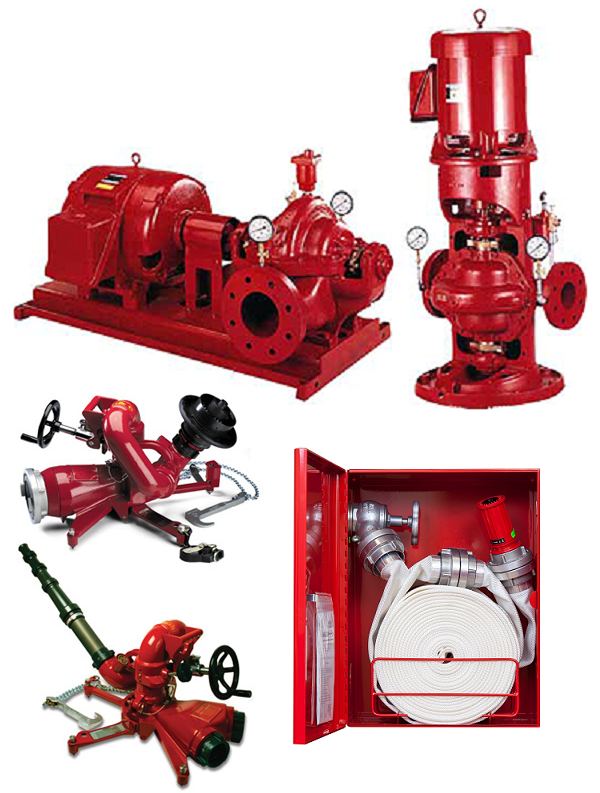 Water-based suppression systems utilize the inexpensive and readily available medium of water to discharge onto flames through a normally fixed piping system. There are 4 main types of Water-based Protection Systems. The hazard/risk to be protected will determine the most suitable type of system you need.
Water-based suppression systems utilize the inexpensive and readily available medium of water to discharge onto flames through a normally fixed piping system. There are 4 main types of Water-based Protection Systems. The hazard/risk to be protected will determine the most suitable type of system you need.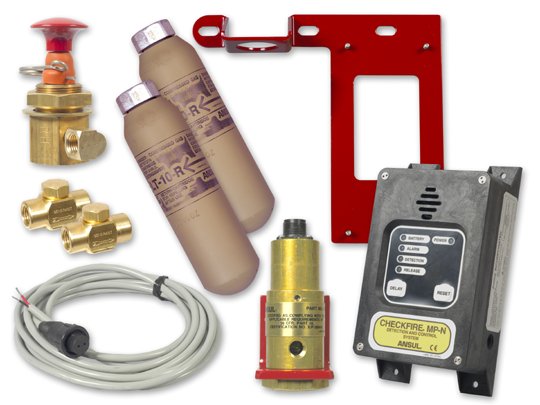
A vehicle fire suppression system is a fire suppression system installed on any type of vehicle. They are especially prevalent in the mobile heavy equipment segment. These systems are designed to protect mobile equipment from fire damage and related losses. These pre-engineered systems are designed per the parameters of the individual machine. Vehicle systems are broken down into these stages: Detection, Actuation, and Distribution. The vehicle system has become a vital safety feature in several industries and is most commonly used in the mining, forestry, landfill, and mass transit industries. Many industrial, commercial and manufacturing applications require specialized fire suppression. TechnoHub is trained in the design, installation, and maintenance of these special hazard applications.
Ansul Industrial Systems
The Ansul brand includes a full line of special hazard fire protection products, including fire suppression/detection systems, extinguishing agents, and portable fire extinguishers.
FireTrace®
Firetrace systems provides cost-effective, stand-alone, automatic fire suppression for your critical production equipment, electrical enclosures, and various micro-equipment enclosures.
Stat-X
Aerosol Fixed System is an innovative, cost-effective, and ecologically safe solution for rapid-fire extinguishing and protection of high-value enclosures.
Foam Systems
Foam systems rapidly secure flammable liquid fires. When protection is needed in flammable aircraft storage and maintenance or other storage and process areas, foam systems offer many advantages over conventional water-based systems.
Carbon Dioxide Systems
The original “clean” agent, carbon dioxide, suppresses fire without leaving behind an agent to damage sensitive equipment. Because there is no agent to clean up, you’re back in business faster. To provide the most economical system arrangement without sacrificing performance, we offer both high and low-pressure systems, including the exclusive ANSUL® “Mini-Bulk” tank technology
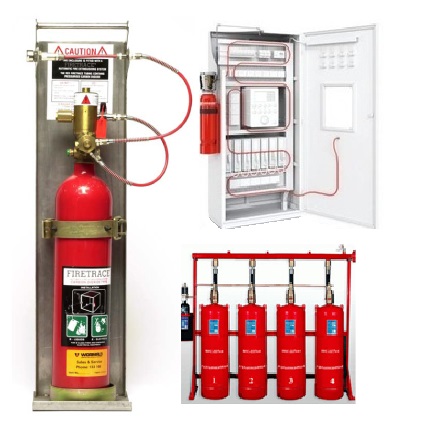 In the event of a fire, the electric system plays a double role:
In the event of a fire, the electric system plays a double role:
- It can generate the energy required for the ignition.
- It provides the combustible material needed for the spreading of the fire.
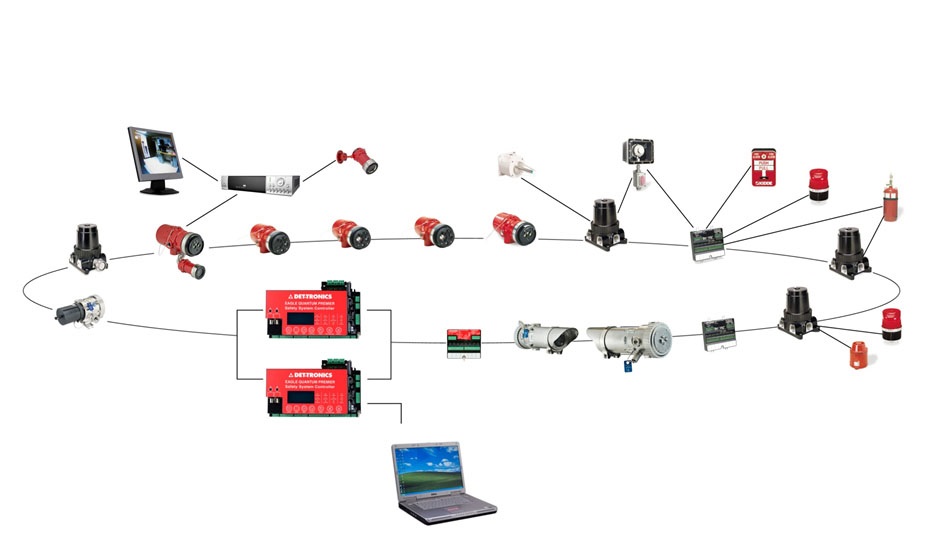 Automatic fire detection systems, when combined with other elements of emergency response and evacuation plans, can significantly reduce property damage, personal injuries, and loss of life from fire in the workplace. Their main function is to quickly identify a developing fire and alert building occupants and emergency response personnel before extensive damage occurs. Automatic fire detection systems do this by using electronic sensors to detect the smoke, heat, or flames from a fire and providing an early warning.
If your workplace uses a fire detection system that was designed and installed to meet the fire protection requirements of a specific OSHA standard, it must also comply with the “Fire Detection Systems” standard.
Automatic fire detection systems, when combined with other elements of emergency response and evacuation plans, can significantly reduce property damage, personal injuries, and loss of life from fire in the workplace. Their main function is to quickly identify a developing fire and alert building occupants and emergency response personnel before extensive damage occurs. Automatic fire detection systems do this by using electronic sensors to detect the smoke, heat, or flames from a fire and providing an early warning.
If your workplace uses a fire detection system that was designed and installed to meet the fire protection requirements of a specific OSHA standard, it must also comply with the “Fire Detection Systems” standard.
